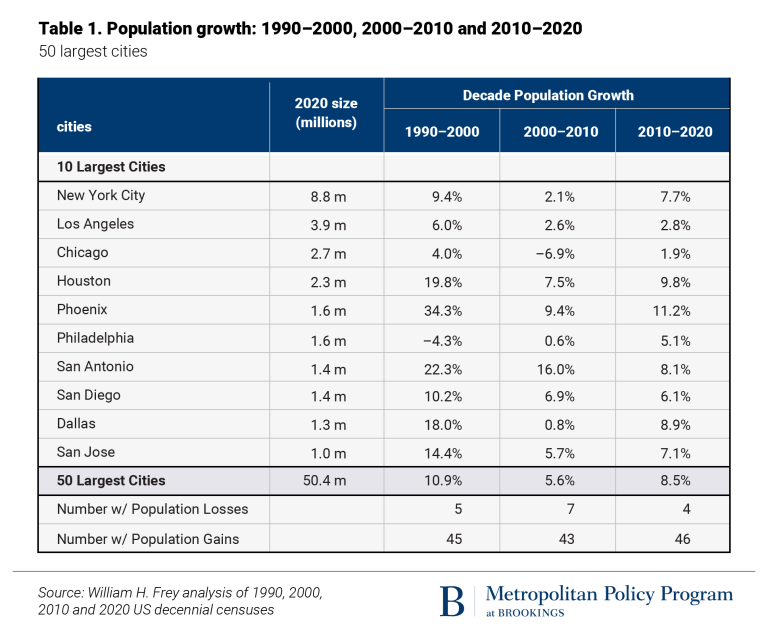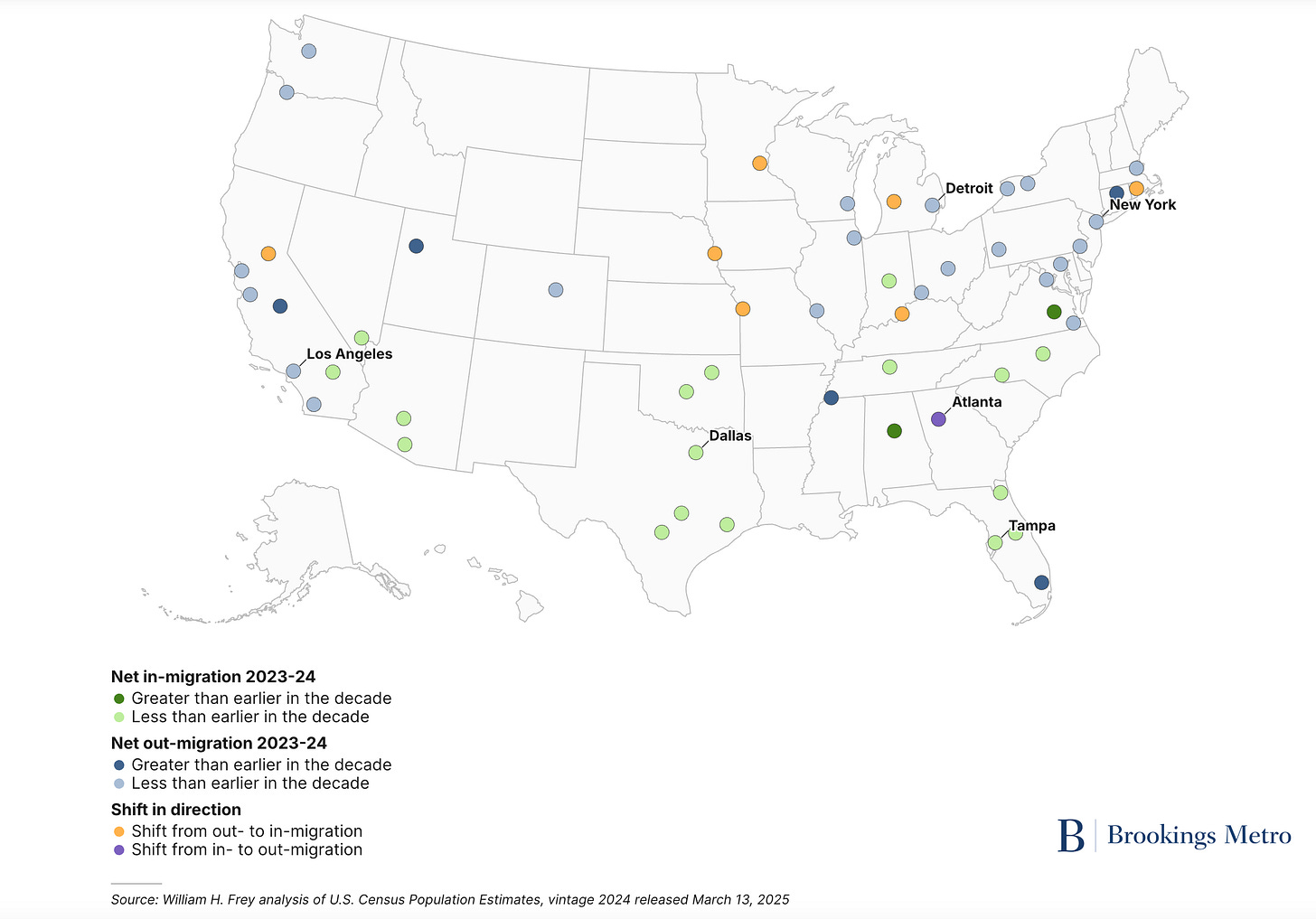6 Trends to Understand How Cities Are Changing in 2025
The second half of this decade will look different
If you’re enjoying these articles, want to get past the paywall, and want to support this work and keep it going, please be sure to upgrade to a paid subscription! It makes all the difference and really, truly is what sustains this newsletter.
Years ago, the writer
coined the term “vibe shift” to describe the way that trends end and new ones begin. Monahan’s term was everywhere after November 2024 when America’s cultural undertones suddenly swung from progressive to MAGA. (And many feel that within just a few months, they’re swinging back again.)Politics aren’t the only things changing. I think we’re entering a different era for cities — perhaps one that will neatly distinguish the first half of the 2020s from the second half.
If the early 2020s were defined by a seller’s housing market, Zoom towns, biotech, and the rise of cities like Tampa and Austin, the second half of the decade is going to be quite different.
Here’s why:
The housing market has shifted
After reaching a national record low of housing inventory for sale in March 2022, Redfin is now reporting that there are 500,000 more sellers than buyers based off how long it’s taking for housing to sell.
And the unsold newly built inventory is at its highest level since 2009. Add to this predictions that the upper middle class is going to experience a mass die-off, and people are fearing a housing crash.
I don’t think we’ll see a crash, but we’re definitely no longer in a seller’s market. I wouldn’t be surprised if many of the places that saw above-average price appreciation during the pandemic see something like 5 to 10 percent price declines.
The extra inventory is also only going to last for so long. Most new construction was built during the pandemic years with historically low interest rates. Permitting and construction are down, particularly for single-family homes. Mortgage rates are supposed to drop next year. And by 2030, Gen Z — the largest generation — is going to enter prime family formation years, likely sparking more demand.
Flight to quality of life and talent
In the 2010s, people were seemingly happy to live in any city — practically every major city grew in that decade. Since 2020, many major cities are still net negative population growth. Those that have grown have done so largely due to immigration — which has all but ended since the start of 2025.
So which cities will grow in the second half of the decade?
Much like Class A+ office space is doing fine while the rest of the office market suffers, I think the second half of the decade will result in a flight to top quality of talent and a flight to top quality of life.
Austin exemplifies the problem of being sort of talented and sort of affordable, but maybe not Class A+ for either. The Wall Street Journal recently published a piece about how Austin is no longer ascendant as a tech hub.
added:The main claim of the WSJ article is that regional tech hubs like Austin are losing talent as tech workers return to the coastal megahubs. The WSJ cites SignalFire data showing Austin’s tech employment dropped 1.6% in 2024, while startup jobs fell 4.9%. LinkedIn data also shows fewer moves from SF and NY to Austin.
I am going to bet on continued growth in places like urban Utah and North Carolina, so long as they remain affordable and punch high for their family friendliness. And the near end of growth in places like Tampa, Austin, and Phoenix – all of which were really popular since 2020, but might no longer cut it in terms of affordability and talent. You can already see the slowdown happening in all the places dotted in light green in the Brookings graphic below.
Before you bounce: The cost of a yearly subscription is about the same as just one cup of coffee a month. With a paid subscription to this newsletter, you get access to 140+ pieces in the archive. I would so appreciate it if you’d take a minute to support and subscribe!








